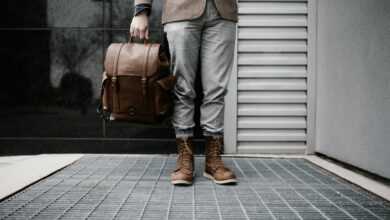
How to Match Your Belt with Your Shoes (and Why It Matters)
Style is often defined by the details. One of the most overlooked—but most telling—details in a man’s outfit is how well his belt and shoes work together. Matching your belt to your shoes might seem like a minor consideration, but it can significantly impact how polished and put-together you appear.
In this guide, we’ll break down why this style rule matters, the do’s and don’ts of belt-shoe coordination, and how to master the art of accessorising like a modern gentleman.
1. Why Matching Your Belt and Shoes Matters
When your accessories are in harmony, it gives your entire outfit a sense of cohesion and balance. Mismatched shoes and belts can stand out for all the wrong reasons, especially in formal or professional settings.
- Creates a unified look: Matching tones and textures show you understand the importance of detail.
- Enhances professionalism: Perfect for interviews, office wear, or formal events.
- Demonstrates personal style: Subtle coordination makes a stronger impression than loud fashion statements.
2. The Basic Rule: Match Leather with Leather
The golden rule is simple: your belt should match the colour and finish of your shoes as closely as possible—especially when dealing with leather.
- Black shoes = Black belt
- Brown shoes = Brown belt (same shade and tone)
- Tan shoes = Tan belt
- Oxblood/burgundy shoes = Oxblood belt
Tip: It’s not just about colour—match the sheen as well. A matte belt with shiny shoes can clash visually.
3. Matching in Formal Settings
When wearing suits or business attire, the belt-shoe match is non-negotiable. Formal settings demand clean, intentional styling, and mismatched accessories can undermine your entire look.
- Stick to classic leather belts with a sleek, understated buckle.
- Avoid wide belts or oversized buckles—they’re too casual for formal wear.
- If your shoes are polished, your belt should have a similar finish.
4. Matching in Smart-Casual & Casual Settings
There’s a bit more flexibility when dressing casually, but matching still matters. You can be looser with colour shades, but coordination should still be deliberate.
- Suede shoes: Pair with a suede or matte-finish belt in a similar tone.
- Trainers: You can wear a canvas or woven belt, but try to complement the colour.
- Brown boots: Pair with a textured brown belt—lighter or darker depending on your outfit.
Style Tip: In casual looks, it’s okay if your belt and shoes aren’t an exact match—just make sure they belong in the same colour family.
5. How to Match Non-Leather Shoes
Canvas trainers, sneakers, espadrilles, and athletic shoes don’t require leather belts—but the colours should still be complementary.
- Wear a canvas, woven, or fabric belt that echoes a colour in your shoes or outfit.
- Neutral colours like navy, grey, or olive are safe choices.
- Avoid pairing sporty shoes with formal leather belts.
6. Belt Width & Buckle Matters Too
Beyond colour and texture, the width and buckle style of your belt should match the occasion—and your shoes.
Formal Belts
- Width: 2.5–3.5 cm (slim)
- Buckle: Simple, polished metal—silver or gold depending on your watch/jewellery
- Pair with: Oxfords, brogues, monk straps, or formal loafers
Casual Belts
- Width: 3.5–5 cm (wider)
- Buckle: Matte or brushed finishes; D-ring or roller styles
- Pair with: Trainers, boots, boat shoes, or espadrilles
7. Exceptions to the Rule
While matching your belt to your shoes is a general guideline, there are stylish exceptions:
- No belt at all: In ultra-minimalist or tailored looks, skipping the belt can create a cleaner line—just make sure your trousers fit perfectly.
- Statement belts: In casual settings, bold belts with contrast colours or textures can work—just keep the rest of the outfit simple.
- Summer styling: Lighter, woven, or canvas belts can break the leather rule in relaxed warm-weather looks.
Matching your belt with your shoes is one of the easiest ways to elevate your style. It shows attention to detail, adds polish to your outfit, and demonstrates that you understand the principles of classic menswear. Whether you’re dressing for a boardroom or a beer garden, coordinated accessories are key to looking your best.




